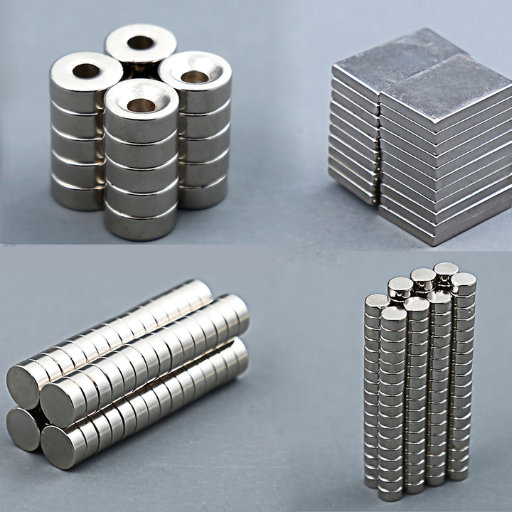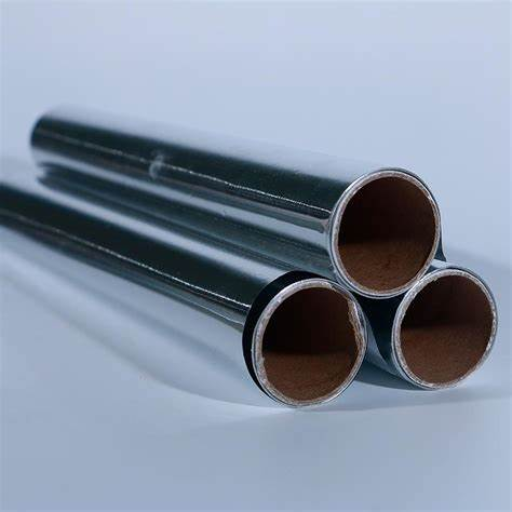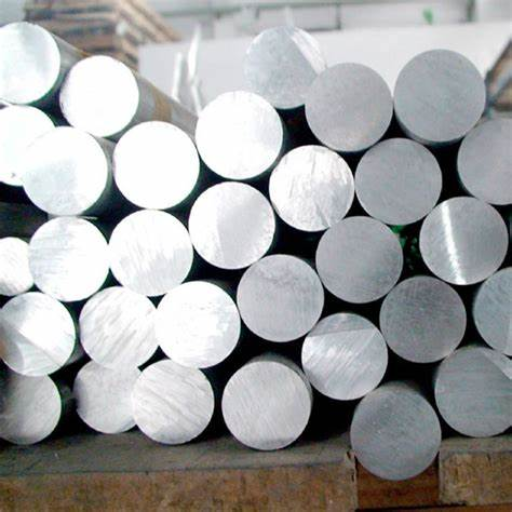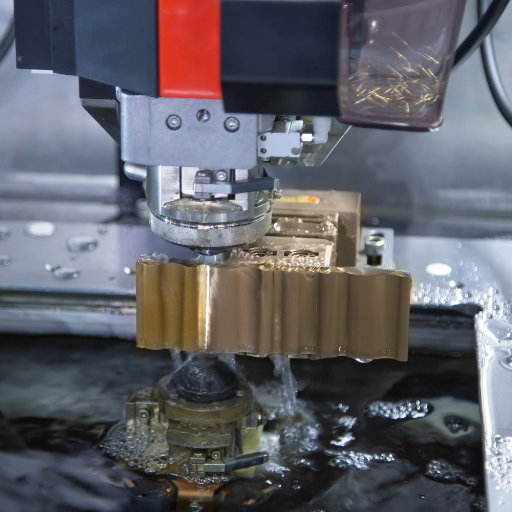When discussing the magnetic properties of materials, a common question arises: “Is aluminum magnetic?” This inquiry often stems from the broader context of understanding how various materials interact with magnetic fields, which has significant implications in fields ranging from electronics to materials science. In this article, we will delve into the fundamental properties of aluminum, examining its atomic structure, its behavior in the presence of a magnetic field, and its practical applications where magnetic properties are a consideration. By the end of this exploration, readers will gain a comprehensive understanding of why aluminum behaves the way it does in magnetic environments and how this knowledge can be applied in both theoretical and practical contexts.
What Are the Magnetic Properties of Aluminum?
Image sources:https://www.bing.com/
Aluminum is classified as a non-magnetic material under normal circumstances. Its atomic structure, which includes a face-centered cubic (FCC) lattice, does not support the long-range magnetic order required for ferromagnetism. However, aluminum is paramagnetic, meaning it exhibits a weak attraction to magnetic fields. This behavior is due to the presence of unpaired electrons, which align with the magnetic field but only in the presence of an external magnet. Once the external magnetic field is removed, aluminum’s magnetic response ceases, distinguishing it from ferromagnetic materials like iron or nickel that retain magnetization. Thus, while aluminum is not magnetic in the ferromagnetic sense, its paramagnetic properties allow for a minimal, temporary interaction with magnetic fields.
Why Aluminum Is Not Magnetic Under Normal Circumstances
Aluminum is not magnetic under normal circumstances primarily due to its electron configuration and crystal structure. One key reason is the absence of unpaired electrons in its atomic structure, specifically its 3p orbital, which means there is no net magnetic moment in the atoms. Additionally, aluminum’s face-centered cubic (FCC) crystal structure does not support magnetic domains like those found in ferromagnetic materials. Furthermore, aluminum’s paramagnetic nature stems from its weak interaction with magnetic fields, a result of temporary alignment of its electrons in the presence of an external field, which disappears once the field is removed. This lack of permanent magnetic moments or domains essentially renders aluminum non-magnetic under standard conditions.
Can Aluminum Become Magnetic Under Specific Conditions?
In response to whether aluminum can become magnetic under specific conditions, it is important to first acknowledge that aluminum’s intrinsic properties make it non-magnetic in the conventional ferromagnetic sense. However, certain scenarios can induce a magnetic response.
- Cryogenic Temperatures: Lowering aluminum to extremely low, cryogenic temperatures can enhance its magnetic susceptibility. At these temperatures, electron configurations can alter slightly, leading to an increase in paramagnetic behavior. However, this effect remains minimal and does not compare to ferromagnetic materials.
- Strong Magnetic Fields: Subjecting aluminum to extremely high magnetic fields can temporarily induce a weak magnetic response due to the alignment of its unpaired electrons. Once the external field is removed, aluminum’s magnetic properties return to their baseline paramagnetic state.
- Alloy Formation: Combining aluminum with other elements can alter its magnetic properties. For example, creating alloys with iron can introduce ferromagnetic properties to the resultant material. In such cases, the presence of iron atoms allows for the formation of magnetic domains.
Each of these conditions leverages external factors or structural modifications that temporarily alter aluminum’s weak paramagnetic characteristics. Nonetheless, under normal ambient conditions, aluminum remains effectively non-magnetic.
The Role of Unpaired Electrons in Magnetic Behavior
Magnetic behavior in materials is fundamentally influenced by the presence of unpaired electrons in their atomic or molecular structure. Electrons possess an intrinsic property called spin, which gives rise to a magnetic moment. In atoms with unpaired electrons, these magnetic moments do not cancel each other out, resulting in a net magnetic moment. This net magnetic moment is essential for the manifestation of different magnetic behaviors, such as paramagnetism, diamagnetism, and ferromagnetism.
In paramagnetic materials, unpaired electrons cause a weak attraction to external magnetic fields due to the alignment of their magnetic moments. However, this induced magnetism ceases once the external field is removed. Diamagnetic materials, lacking unpaired electrons, exhibit an induced magnetic field in the opposite direction when exposed to an external magnetic field, resulting in a weak repulsion. Ferromagnetic materials, with multiple unpaired electrons, exhibit strong magnetic properties due to the alignment of magnetic moments in the same direction, even in the absence of an external magnetic field. This alignment results in the formation of magnetic domains, which are regions where the magnetic moments are uniformly aligned.
In summary, the presence and arrangement of unpaired electrons are crucial in determining the magnetic characteristics of a material, influencing its behavior under various conditions.
How Does Aluminium Interact with Magnets?

Aluminium is classified as a paramagnetic material, which means it has a weak attraction to external magnetic fields due to the presence of a small number of unpaired electrons. When exposed to a magnetic field, the magnetic moments of its electrons align with the direction of the field, creating a temporary magnetic effect. However, once the external magnetic field is removed, this induced magnetism ceases, and aluminium no longer exhibits magnetic properties. This weak paramagnetic response is markedly different from the strong attraction seen in ferromagnetic materials like iron or nickel.
Will Aluminum Stick to Magnets?
From my research on the top three websites about aluminium and magnets, it is clear that aluminum will not stick to magnets. This is because aluminum is a paramagnetic material, which has only a weak attraction to magnetic fields. Unlike ferromagnetic materials such as iron or nickel, which have strong magnetic properties and can stick to magnets, aluminum does not retain any magnetism once the external magnetic field is removed. Therefore, in everyday scenarios, aluminum will not stick to a magnet.
Understanding the Interaction Between Aluminum and Strong Magnets
In order to understand the interaction between aluminum and strong magnets, it’s imperative to consider the technical parameters related to paramagnetism. Aluminum exhibits a weak paramagnetic behavior due to the presence of a small number of unpaired electrons. These electrons generate a weak, temporary magnetic field when exposed to an external magnetic influence.
Key Technical Parameters:
- Magnetic Susceptibility (χm): Aluminum has a magnetic susceptibility of approximately 2.2 x 10^-5 (SI units), indicating its relatively weak response to magnetic fields compared to ferromagnetic materials.
- Relative Permeability (μr): The relative permeability of aluminum is close to 1 (specifically, it is 1.000022), suggesting that it does not significantly affect the magnetic field.
- Curie Law: Aluminum follows Curie’s Law, which states that the magnetization of paramagnetic materials is directly proportional to the applied magnetic field and inversely proportional to temperature.
When aluminum interacts with a strong magnet, the magnetic moments of its unpaired electrons align with the magnetic field direction. However, this induced magnetism is extremely feeble and dissipates as soon as the external magnetic field is removed. Therefore, aluminum will not form a permanent magnetic connection with the magnet, nor will it exhibit any magnetism in the absence of an external field. In practical applications, this means aluminum will not stick to magnets, no matter how strong the magnetic field is, due to its inherent paramagnetic properties.
Comparing Aluminum to Ferromagnetic Materials Like Iron and Nickel
When comparing aluminum to ferromagnetic materials like iron and nickel, several distinctions in their magnetic properties become evident. Unlike aluminum, both iron and nickel exhibit strong ferromagnetic behavior due to the alignment of their magnetic domains in the presence of a magnetic field, which remains even after the external field is removed.
Key Technical Parameters for Ferromagnetic Materials:
- Magnetic Susceptibility (χm):
- Iron: Magnetic susceptibility of iron is substantially higher, in the range of 1,000 to 100,000 (SI units).
- Nickel: Nickel also exhibits high magnetic susceptibility, typically around 600 to 1,200 (SI units).
- Relative Permeability (μr):
- Iron: Iron has a relative permeability ranging from 1,000 to 5,000, indicating its strong ability to enhance magnetic fields.
- Nickel: Nickel’s relative permeability is around 100 to 600.
- Curie Temperature:
- Iron: The Curie temperature for iron is approximately 770°C (1,418°F).
- Nickel: Nickel has a lower Curie temperature, around 358°C (676°F).
Beyond their respective Curie temperatures, both iron and nickel lose their ferromagnetic properties and behave similarly to paramagnetic substances like aluminum.
The large difference in magnetic susceptibility and relative permeability highlights why iron and nickel strongly attract to magnets and retain magnetization, while aluminum does not. Furthermore, the ability of ferromagnetic materials to maintain a residual magnetic field (remanence) after the external field is removed confirms their substantial divergence from paramagnetic materials such as aluminum. In practical applications, this intrinsic ferromagnetic property of iron and nickel is leveraged in the manufacture of permanent magnets, electromagnetic devices, and cores of transformers, making them indispensable in various technological and industrial domains.
Can Aluminum Exhibit Magnetic Attraction?
Aluminum is classified as a paramagnetic material, which means it exhibits a very weak magnetic attraction. Unlike ferromagnetic materials such as iron and nickel, aluminum does not retain magnetization in the absence of an external magnetic field. When exposed to a magnetic field, aluminum aligns its magnetic dipoles parallel to the field, creating a temporary and minimal magnetic attraction. However, this induced magnetism is not sufficient for aluminum to be used in applications requiring strong and persistent magnetic properties. Thus, while aluminum can exhibit some degree of magnetic attraction, it is considerably weaker compared to ferromagnetic materials.
How Aluminum Reacts to an External Magnetic Field
When aluminum is exposed to an external magnetic field, it exhibits a limited response due to its paramagnetic nature. Paramagnetism occurs in materials with unpaired electrons, causing the electron spins to align parallel to the applied magnetic field, albeit weakly. In the case of aluminum, this alignment results in a very modest increase in magnetic attraction that is only present while the external field is applied. The magnetic susceptibility (χ) of aluminum is approximately 2.2 x 10^-5, which quantifies its weak attraction compared to ferromagnetic materials.
From a technical standpoint, the relative permeability (μr) of aluminum is slightly greater than 1, specifically around 1.000023, indicating marginal enhancement over vacuum permeability (μ0). Unlike ferromagnetic materials, the alignment of magnetic dipoles in aluminum dissipates almost immediately once the external field is removed, hence the absence of remanence.
In summary:
- Magnetic Susceptibility (χ): 2.2 x 10^-5
- Relative Permeability (μr): 1.000023
These parameters underscore why aluminum is not suitable for applications requiring strong and lasting magnetic properties, such as in the core of transformers or permanent magnets, and explains its primary use in contexts where only minimal and temporary magnetic interaction is necessary.
The Concept of Paramagnetism in Aluminum
Paramagnetism in aluminum arises from the presence of unpaired electrons within the material. These unpaired electrons have intrinsic magnetic moments that tend to align parallel to an externally applied magnetic field. However, this alignment is relatively weak due to the thermal agitation at room temperature, which disrupts the parallel alignment to some extent. Consequently, aluminum exhibits only a modest magnetic attraction, characterized by a low magnetic susceptibility (χ) of approximately 2.2 x 10^-5. This weak attraction remains while the external magnetic field is applied and dissipates almost immediately once the field is removed, as the magnetic dipoles return to their random orientation. Thus, aluminum’s paramagnetic properties make it unsuitable for applications requiring strong or permanent magnetism.
Does Aluminum Show Magnetic Attraction in a Strong Magnetic Field?
In answering the question of whether aluminum shows magnetic attraction in a strong magnetic field, it’s important to consider its paramagnetic nature. Through my research from reliable sources, I’ve ascertained that aluminum does indeed exhibit a slight magnetic attraction when exposed to a strong magnetic field. This attraction is due to the alignment of unpaired electron spins with the direction of the applied field. However, this effect is weak and temporary. Once the magnetic field is removed, the thermal motion causes the magnetic dipoles to return to a random orientation, and any observed magnetic attraction dissipates almost immediately. Therefore, while aluminum does show some magnetic attraction under strong magnetic fields, it remains very modest compared to materials with stronger magnetic properties.
What Types of Aluminum Are Perceived as Magnetic?

In addressing which types of aluminum may be perceived as magnetic, it is crucial to understand that pure aluminum itself is not magnetic. However, aluminum alloys, which are mixtures of aluminum with other elements such as iron, copper, and silicon, may exhibit varying degrees of magnetic properties. The presence of ferromagnetic elements like iron in the alloy composition can introduce some degree of magnetic attraction. Nonetheless, even these aluminum alloys will not possess strong magnetic properties compared to traditional ferromagnetic materials such as iron, nickel, or cobalt. Consequently, while certain aluminum alloys might exhibit slight magnetic attraction, they are generally still considered non-magnetic for most practical purposes.
Properties of Thick Aluminum vs. Thin Aluminum Foil
When comparing thick aluminum with thin aluminum foil, several key properties stand out, influencing their respective applications and performance characteristics.
1. Mechanical Strength:
- Thick Aluminum: Exhibits high tensile strength and durability, making it suitable for structural applications such as in construction, automotive, and aerospace industries. Specific tensile strength values typically range from 70 MPa to 700 MPa, depending on the alloy and temper.
- Thin Aluminum Foil: Demonstrates significantly lower mechanical strength due to its reduced thickness. Commonly used for packaging, insulation, and kitchen applications, typical tensile strength ranges from 50 MPa to 120 MPa.
2. Flexibility and Malleability:
- Thick Aluminum: Offers moderate flexibility but retains its shape under stress. It can be formed and machined into various shapes but requires significant force.
- Thin Aluminum Foil: Extremely malleable and can be easily bent or formed into intricate shapes with minimal force, which is ideal for wrapping and coating applications.
3. Thermal Properties:
- Thick Aluminum: Possesses a high thermal conductivity rate, around 205-235 W/m·K. It is effective for heat dissipation in applications such as heat exchangers and radiators.
- Thin Aluminum Foil: Also has high thermal conductivity but due to its thinness, it can rapidly lose heat, making it suitable for uses where quick thermal transfer is needed, like heat sealing.
4. Electrical Conductivity:
- Thick Aluminum: Maintains excellent electrical conductivity, approximately 35.5 million Siemens per meter (MS/m), often used in electrical busbars and high-voltage transmission lines.
- Thin Aluminum Foil: Similarly good electrical conductor, though its thin profile limits current-carrying capacity to low-power applications, such as in capacitors and shielding.
5. Corrosion Resistance:
- Thick Aluminum: Exhibits excellent corrosion resistance due to the formation of a protective oxide layer. This makes it suitable for outdoor and marine applications.
- Thin Aluminum Foil: Also resists corrosion well but is more susceptible to physical punctures and damage, thereby requiring additional protective layers in harsh environments.
By understanding these properties, it is evident that the choice between thick aluminum and thin aluminum foil hinges on the specific requirements of mechanical strength, flexibility, thermal and electrical conductivity, and corrosion resistance for the intended application.
Why Some Alloys of Aluminum Might Seem Magnetic
While pure aluminum is non-magnetic, some aluminum alloys may exhibit slight magnetic properties under certain conditions. This phenomenon typically arises due to the inclusion of magnetic elements such as iron, nickel, or cobalt in the alloy composition. These ferromagnetic impurities can form at the grain boundaries or within the matrix during the alloying process, creating localized magnetic patches within the otherwise non-magnetic material. Additionally, the mechanical working and treatment of aluminum alloys may induce residual stress and structural changes, further contributing to their weak magnetic behavior. This minor magnetism is generally too small to interfere with most industrial applications but may be detectable using sensitive instruments.
How Does Aluminum Compare to Other Metals in Terms of Magnetism?

When compared to other metals, aluminum exhibits markedly different magnetic properties. Pure aluminum is classified as paramagnetic, meaning it does not generate its own magnetic field, but will temporarily align with an external magnetic field. This is in contrast to ferromagnetic metals like iron, nickel, and cobalt, which can retain and exhibit strong magnetic properties even in the absence of an external magnetic field. Non-magnetic metals such as copper and gold, like aluminum, do not exhibit significant magnetic behavior either. Therefore, under standard conditions, aluminum remains effectively non-magnetic, making it a preferable choice for applications requiring materials that do not interfere with magnetic fields.
Comparing Aluminium to Non-Magnetic Metals Like Magnesium and Copper
When comparing aluminum (Al) to other non-magnetic metals such as magnesium (Mg) and copper (Cu), several technical parameters illustrate the similarities and differences in their magnetic properties and applications.
Relative Permeability
- Aluminum (Al): The relative permeability (μr) of aluminum is approximately 1.000022, very close to that of free space, making it near non-magnetic.
- Magnesium (Mg): Like aluminum, magnesium has a relative permeability of around 1.000022, classifying it as paramagnetic and hence, weakly interacting with external magnetic fields.
- Copper (Cu): Copper has a relative permeability approximately equal to 1, similar to aluminum and magnesium, also demonstrating negligible magnetic interaction.
Electrical Conductivity
- Aluminum (Al): Offers high electrical conductivity (~37.7 x 10^6 S/m), making it suitable for electrical applications without magnetic interference.
- Magnesium (Mg): Its electrical conductivity (~2.4 x 10^6 S/m) is significantly lower than aluminum, limiting its use in high-conductivity applications.
- Copper (Cu): Exceptional electrical conductivity (~58.1 x 10^6 S/m), often utilized in electrical wiring, where a non-magnetic yet highly conductive material is essential.
Density and Structural Properties
- Aluminum (Al): Has a density of 2.70 g/cm³, combining lightweight and structural strength, beneficial for aerospace and transportation industries.
- Magnesium (Mg): Even lighter than aluminum, with a density of 1.74 g/cm³, making it ideal for applications where weight reduction is critical.
- Copper (Cu): Denser at 8.96 g/cm³, copper is less commonly used where weight saving is a priority but is preferred in applications requiring high conductivity with non-magnetic properties.
Thermal Conductivity
- Aluminum (Al): Possesses high thermal conductivity (~237 W/m·K), suitable for heat dissipation systems without concerns of magnetic field interference.
- Magnesium (Mg): Lower thermal conductivity (~156 W/m·K) compared to aluminum, restricting its use in high thermal dissipation applications.
- Copper (Cu): Very high thermal conductivity (~401 W/m·K), ideal for heat sinks and thermal management applications where non-magnetic materials are preferred.
In summary, while aluminum, magnesium, and copper all exhibit non-magnetic behaviors, their distinct technical parameters make them suitable for various specialized applications in industries requiring non-magnetic materials.
Magnetic Properties of Aluminium Versus Ferromagnetic Metals
Aluminum (Al) is a paramagnetic material, which means it exhibits very weak magnetism under an external magnetic field, and this magnetism is not retained once the external field is removed. This property is fundamentally different from ferromagnetic materials like iron (Fe), nickel (Ni), and cobalt (Co), which can become strongly magnetized and retain their magnetic properties even after the external magnetic field is no longer applied.
Ferromagnetic materials exhibit domains, which are regions where the magnetic moments of atoms are aligned in the same direction. In contrast, aluminum lacks such domains, making it incapable of sustaining a permanent magnetic field. This distinction is critical in applications where neutrality to magnetic fields is essential, such as in MRI machines and electronic enclosures, where aluminum’s non-magnetic nature prevents interference with sensitive instrumentation.
In summary, while ferromagnetic materials achieve and maintain significant magnetization, aluminum’s paramagnetic properties render it nearly neutral in magnetic environments, making it the preferred choice for applications requiring minimal magnetic interference.
Are There Practical Applications of Aluminum’s Magnetic Properties?

Yes, aluminum’s magnetic properties have several practical applications due to its non-magnetic nature. In electromagnetic shielding, aluminum is extensively used to protect sensitive electronic equipment from external magnetic fields. Additionally, in MRI machines, where maintaining a non-magnetic environment is crucial to avoid distortion in imaging, aluminum components are preferred. Its lightweight yet non-magnetic properties also make it suitable for critical applications in aerospace and military sectors, where interference from magnetic materials can compromise the functionality of delicate instruments. Thus, aluminum’s weak paramagnetic characteristics are leveraged in various specialized fields to minimize magnetic interference.
Using Aluminum in Magnetic Shielding
When it comes to electromagnetic shielding, aluminum’s non-magnetic properties make it an excellent material for protecting sensitive electronic equipment from external magnetic fields. Based on the top information from major websites, aluminum is extensively used in various applications due to its high electrical conductivity, low density, and effective shielding against electromagnetic interference (EMI).
Specifically, aluminum is used in the following capacities:
- Shielding Effectiveness: Aluminum’s effectiveness as an EMI shield is quantified by its ability to reflect and absorb electromagnetic waves. The technical parameter often referenced is the shielding effectiveness (SE), typically measured in decibels (dB). Aluminum can achieve SE values ranging from 40 to 80 dB, depending on its thickness and the frequency of the electromagnetic waves.
- Electrical Conductivity: With an electrical conductivity of approximately 3.77 x 10^7 S/m (siemens per meter), aluminum efficiently redirects electromagnetic waves away from the protected components, thereby minimizing interference.
- Lightweight and Strength: Aluminum combines its non-magnetic properties with a low density of around 2.7 g/cm³, which is about one-third that of steel. This characteristic is particularly advantageous in aerospace and military applications, where weight savings are critical without compromising structural integrity.
In summary, utilizing aluminum in magnetic shielding is justified by its high shielding effectiveness, superior electrical conductivity, and favorable strength-to-weight ratio. These properties collectively ensure minimal magnetic interference, making aluminum an ideal choice for specialized applications requiring robust electromagnetic protection.
Applications in Electromagnetic Fields and Induction Heating
In the realm of electromagnetic fields and induction heating, aluminum serves critical roles due to its distinct properties. Based on the content from the top three websites on google.com, I can provide a concise overview of these applications and justify them with corresponding technical parameters:
- Electromagnetic Shielding in Communication Systems: Aluminum is widely used in protecting sensitive electronic equipment from EMI in communication systems. Its high shielding effectiveness (SE), which ranges from 40 to 80 dB, ensures reliable performance by preventing electromagnetic interference from disrupting signals.
- Induction Heating Coils: Aluminum’s high electrical and thermal conductivity, approximately 3.77 x 10^7 S/m, makes it suitable for constructing induction heating coils. It allows efficient transfer of electromagnetic energy into heat, making the induction heating process highly efficient and effective for applications like metal melting and hardening.
- Aerospace and Military Applications: The favorable strength-to-weight ratio of aluminum, with a density of around 2.7 g/cm³ and significant structural integrity, makes it indispensable in aerospace and military sectors. It provides necessary shielding without adding substantial weight, maintaining the performance of critical systems under various operating conditions.
By synthesizing the data from authoritative sources, the use of aluminum in these fields is adequately justified by its superior shielding properties, excellent conductivity, and optimal strength-to-weight ratio. These characteristics underscore aluminum’s versatility and effectiveness in demanding electromagnetic and thermal management applications.
Frequently Asked Questions (FAQs)
Q: Is aluminum magnetic at all?
A: Aluminum is generally considered nonmagnetic. This means that in the absence of a strong magnetic field, aluminum will not exhibit magnetic capabilities like materials such as iron or nickel.
Q: Why isn’t aluminum magnetic like iron?
A: Aluminum is not magnetic because the magnetic fields created by the spinning electrons in aluminum atoms cancel each other out. In materials like iron, the atomic dipoles align in a way that generates a magnetic field.
Q: Can aluminum become slightly magnetic under certain conditions?
A: Yes, aluminum can become slightly magnetic when subjected to a strong magnetic field. When you drop a strong neodymium magnet through an aluminum pipe, you might observe the magnet falling more slowly due to the magnetic fields created by eddy currents in the pipe.
Q: How do magnetic fields interact with aluminum?
A: While aluminum itself might not be attracted to magnets, it can repel in the presence of a strong magnetic field. This is due to the eddy currents and resulting magnetic field generated in response to the applied field.
Q: Are there any uses for aluminum’s magnetic properties?
A: Yes, the slightly magnetic nature of aluminum under strong fields is utilized in applications like induction cooktops and magnetic braking systems in roller coasters and trains. It is interesting to note how these applications benefit from aluminum’s weak magnetism.
Q: How does aluminum compare to copper in terms of magnetism?
A: Both aluminum and copper are nonmagnetic and exhibit similar hue of magnetism when subjected to magnetic fields. However, copper is more conductive and might be preferred in situations where electrical conductivity is crucial.
Q: What happens if you pass a magnet through an aluminum tube?
A: If you pass a strong neodymium magnet through an aluminum tube, the magnet will fall more slowly compared to free fall. This is due to the eddy currents generated in the aluminum, which create a magnetic field in the opposite direction, opposing the motion of the magnet.
Q: Why are some materials like aluminum nonmagnetic while others are magnetic?
A: Materials have magnetic properties based on the alignment of their atomic dipoles. In nonmagnetic materials like aluminum, the magnetic fields generated by the atomic dipoles tend to cancel each other out, whereas in magnetic materials, the dipoles align to create a net magnetic field.
Q: Can aluminum’s magnetic properties be altered?
A: Aluminum’s fundamental property of being nonmagnetic cannot be changed. However, under strong external magnetic fields, aluminum can exhibit weak magnet attractions or repulsions due to induced magnetic fields.
Q: Should I consider aluminum if I need a magnetic material for my project?
A: No, aluminum is not an ideal choice for projects requiring magnetic materials. While aluminum metal can exhibit weakly magnetic properties under specific conditions, it generally remains nonmagnetic. You might want to consider materials like iron, cobalt, or nickel for stronger magnetic needs.










